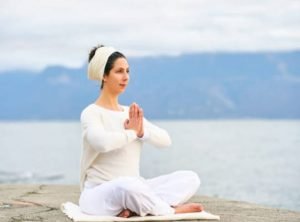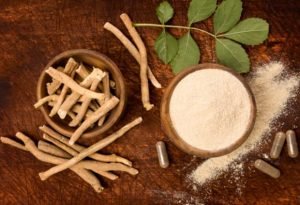
by admin | Jun 10, 2022 | Health
What are Alternative Health remedies?
The internet is full of information on how you can cure yourself with natural and alternative remedies, foods, oils herbs and more and the information has grown in line with the surge in natural medicine popularity. Alternative health remedies definitely have benefits and while they are not always a cure, they can help in certain situations.
Alternative medicines are treatments that are considered to be an alternative approach and /or a complementary support to traditional Western medicine or allopathic / conventional treatments, that include plants, oils, supplements, nutrition, mind and body works amongst others, from varying disciplines and cultures. They can be used to treat many different kinds of illnesses and diseases.
In the Western world, many alternative remedies are largely unregulated, and their efficacy is not always established by scientific evidence. Therefore, it’s important to fully research your therapy and practitioner to ensure you get the best help possible. There are many great societies helping to regulate and support these therapies and practitioners, and it is changing all the time which is a great thing to see.
There are literally thousands of therapies so do your research well or seek the advice of a qualified Naturopath who is often qualified in many disciplines to help you to choose your therapy or guide you to the appropriate therapist. You may have heard of herbal remedies, nutritional therapy, meditation, mindfulness, yoga, homeopathic treatments, acupuncture, acupressure, bachs remedies and other more common modalities but there are many thousands of others. Some people use alternative healing modes as a way to combat the toxicity of modern life or to find peace with the body and mind.
Alternative health remedies for skin problems and hair.

Alternative health remedies are often said to be the newest trend in medicine, where in actual fact they have been around for many thousands of years in a lot of cases. With many people investing in those natural, organic remedies, we have to ask ourselves:
What can these remedies really do?
There are many claims about the benefits of alternative remedies and many report benefits such as helping everything from skin problems and digestion problems through to circulation and hair growth. The use of natural remedies is not new. The word “remedy” comes from the Latin “recuperāre,” which means “to make whole again.”
Alternative health remedies are not usually intended to cure major illnesses, such as cancer or diabetes but can be a support and benefit to the immune system and for overall wellbeing and mood. They are commonly called upon for milder problems, like skin infections or digestive issues and can sometimes be used in place of, but more commonly alongside, prescription medicine to support minor health concerns.
Let’s look at some remedies
Hair growth

There are a number of remedies that people can use to stimulate hair growth. These remedies range from natural home-grown methods to expensive treatments.
- -Massage therapy,
- -Aloe Vera,
- -Coconut oil,
- -Ginseng,
- -Geranium oil,
- -Lemon,
- -Onion Juice,
- -Rosemary oil
have all long been used to stimulate hair growth.
Skin
Natural remedies are an affordable way to solve problems. They can be found in the kitchen or even in the back garden. Some natural remedies for skin are apple cider vinegar, cucumber, and oatmeal masks. As well as aloe vera and rose oil.
Apple cider vinegar is a good remedy for dry skin because it has a pH of 4-5 which balances the skin’s natural pH level of 5-6. It is also rich in antioxidants such as polyphenols and flavonoids that help fight free radicals and prevent premature aging.
Cucumbers have compounds called cucurbitacin’s that shrink blood vessels, thereby reducing inflammation on your face and improving circulation to your skin cells.
Oatmeal is good for oily or acne-prone skin because it can soak up excess oil which help keep pores clean, but it is also antioxidant and anti-inflammatory and can also help to treat dry skin and remove dead skin cells. Oats contain saponins which are natural cleansers.
Go natural, its kinder.

Natural remedies are a kinder way to cure your skin because they don’t usually have any side effects and are made from organic materials that do not contain any chemicals. One of the most popular old natural remedies is honey, which has antibacterial and anti-inflammatory properties. Honey (with lemon juice and cinnamon powder)
If you are vegan there are others which carry similar healing properties.
- – Coconut oil
- – Flaxseed Scrub
- – Aloe Vera and Cucumber with Coconut oil
- – Apple cider vinegar mixed with water
- – Blueberry face mask
- – Coffee mask
- – Banana face mask
- To name a few.
Always consult a doctor before trying natural herbs, oils, or remedies
So you can see, there are many benefits to using natural remedies and these are just a tiny selection, so I urge you to do your research and try things out, above all, have fun. Natural medicine practitioners can work very happily and successfully alongside your primary care practitioner or Doctor and they very often do. So do not think it must be one or the other.
Disclaimer Note: It’s important to note though, that just because something Is natural does not mean zero risk. While many are very low risk there still can be complications, contraindications and contra-actions.
The internet is full of information on how you can cure yourself with natural remedies, but we recommend that you seek out a Qualified Natural Practitioner and always consult a Doctor before trying any new things. Never stop taking any prescribed medication without speaking to your health practitioner first.

by admin | Jun 10, 2022 | Health, General
What Are Some Of The More Common Meds And How They Work
A Better Understanding Of The Most Popular Prescription Drugs Medications are often a part of the treatment options most psychiatrists give their clients.
They are developed specifically to help ease the symptoms of anxiety, depression, and other mental conditions. We all know that meds sound scary, so in order to break the stigma surrounding them, we decided to write this article.
Its aim is to explain what the most common prescription meds are and how they work so that people have a higher level of understanding when they come into contact with them.
We hope you find this interesting.
Xanax

We’ve all heard of Xanax – a benzodiazepine that treats anxiety and panic. It works by increasing the effects of gamma-aminobutyric acid or, in simpler terms, the chemical responsible for calmness and relaxation. It’s absorbed quickly by the body, which is why most doctors recommend it.
Because of this, however, some people may abuse it, which is why it’s on the list of controlled substances in most countries. It has some side effects, especially if mixed with other medications. With time, people can become more tolerant of the substance, which is why dosage is very important when continuously taking Xanax.
Zoloft
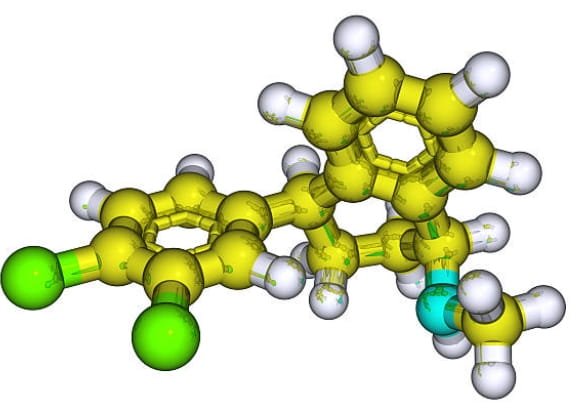
Zoloft is the brand name of one of the most famous antidepressants out there. This is an SSRI (selective serotonin reuptake inhibitor) that focuses on serotonin levels which are often outside of the norm in people with anxiety, depression, OCD, and the likes.
Many psychologists recommend it over other antidepressants because of its lighter side effects. It’s also important to mention that this medication works slower than Xanax – here, the peak effect can be seen somewhere between 4 and 8 hours after taking the pill itself.
Prozac

This is another SSRI, but it’s different from Zoloft. It gained popularity much earlier, in the 1980s, and has been used ever since. This medication is very often taken on a regular basis alongside therapy. It is mostly used for treating anxiety disorders. However, many people recommend it for depression and OCD as well.
Its full effects can be seen up to 12 weeks after starting to take it, which can be frustrating and the reason why some people quit before they reach that point. The same as the other medications on this list, it should not be mixed with other substances, especially alcohol.
Ativan
This drug is a common antidepressant that works in a similar way to Xanax. However, it also affects the body’s physical functions and responses during such moments. It has a fast effect and as such, is often recommended for panic attacks and acute agitation, and restlessness.
It is also prescribed for alcohol withdrawal, seizures, and insomnia. A specific side effect that Ativan has is known as “rebound anxiety” – a relapse or worsening of the same feeling which was the initial reason for taking the pill.
A different but important side effect is also an overall numbing feeling towards life events and responsibility when under the influence of Ativan.
Adderall
Adderall is a stimulant medication often prescribed to people with ADHD. It’s a mix of dextroamphetamine and amphetamine that increases the activity of the central nervous system, making you more focused. It comes in two versions – immediate and extended-release – providing two different sorts of treatment.
One deals with instantaneous outbreaks, while the other with predetermined conditions. The deficiency in attention span is believed to be caused by a decrease in dopamine, and Adderall makes your brain produce larger quantities on a more regular basis.
Although it’s estimated to help around 75% of patients with ADHD, this medication also has side effects and can be addictive if not taken according to prescription.
Final Thoughts
Medications help people all over the world. Being so widespread, it’s incredibly important to know what they’re prescribed for, how they work, and what side effects they can have.
Here we have made a very short summary about the most common meds, but we highly recommend you do more research if you’re considering taking this or similar medicine and, of course, consult with a professional!
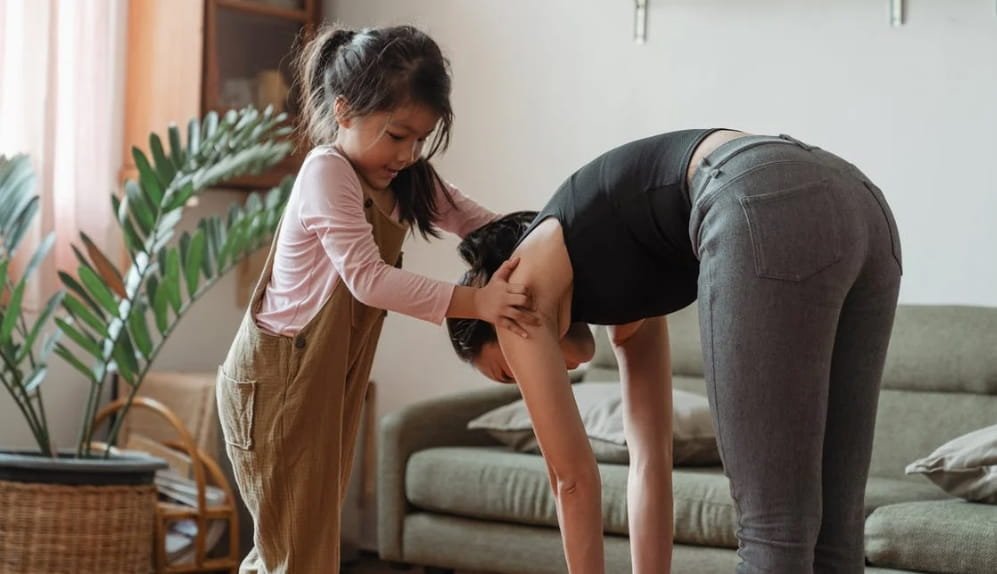
by admin | Jun 10, 2022 | Workouts
The Core & Vacuum Training
Many people get into the gym for the sole purpose of developing a good-looking midsection and more specifically, a six-pack. However, what we have in the middle of the body is far more than just abs, as this portion of your torso is responsible for a variety of important functions. In this short article, we’ll reveal in detail what you should know about the abs, core, their functions and how to train them with a long-forgotten, old-school exercise – The stomach vacuum.
The Core 101
For the most part, when you hear the word “core” you may think of your sixpack, but the truth is different. The six-pack is just a part of your core and works in synergy with other muscles around it, to ultimately:
- Keep your posture good
- Stabilize internal organs
- Keep you on your feet
- Exert force using other muscle groups
It is considered that the core is made up of the external and internal abdominal muscles, the glutes, the spinal erectors, obliques and the diaphragm.
Static VS Dynamic Exercises

Though crunches are a very popular exercise for the abs, they don’t even get close to the full functional potential of your core. As a matter of fact, the abdominals have a variety of functions, both dynamic & static. For instance, leg raises would allow the abs to contract and relax dynamically, while just holding your legs raised in a static position would contract the abs statically.
Both of these functions should be exercised during your training, to achieve maximum development.
Here are some of the best static & dynamic exercises you can do for the abs:
- Hanging knee raises
- Hanging leg raises
- Side to side leg raises
- Front lever drills
- Full front lever
- Russian twists
- Boxing bag upside down crunches
- Dragon flag
- L-Sit
The Stomach Vacuum

A chiseled set of abs will give your waistline a complete overhaul and if you want to emphasize on that even further, you can implement the stomach vacuum in your training routine. With this exercise, you will engage the internal abdominal muscles and your waistline will naturally become more tucked in.
Additionally, this is a whole workout for the sixpack as well, so do develop new, unseen before lines all over your midsection! Here’s how to do the stomach vacuum:
- Stand up on your feet
- Take a completely straight body position
- Take a deep breath
- Slowly exhale and contract the abs while holding your breath
- Swallow the abdominal wall in and under the rib cage
- Hold this vacuum for a couple of seconds and release
Initially, this may feel odd but with time, you will start feeling more and more mind-muscle connection. This exercise is best done on an empty stomach and can be practically completed every single day.
Take Home Message
The core is made up of a variety of muscle groups with the abdominals being the predominantly recognized one.
Your abs and obliques serve a variety of important functions that allow for body stability during complex movements, which is why you should train them both dynamically and statically. The stomach vacuum is one of the exercises that will allow you to engage the deep abdominal muscles, thus contributing to a better overall development.
Stay aesthetic!

by admin | Jun 10, 2022 | Health
What Does “Healthy Eating” Mean?
The Actual Definition Of Healthy Eating Patterns
Eating healthily is one of those concepts that seem to have a clear definition, but in reality is quite complex. What one person considers healthy eating may not be the same as what another person considers healthy. So, what does “healthy eating” mean? Is it possible to come up with a single definition that everyone can agree on?
Probably not, but we can take a look at some of the common components of healthy diets and see if there is anything we can all agree on.
The Human Needs
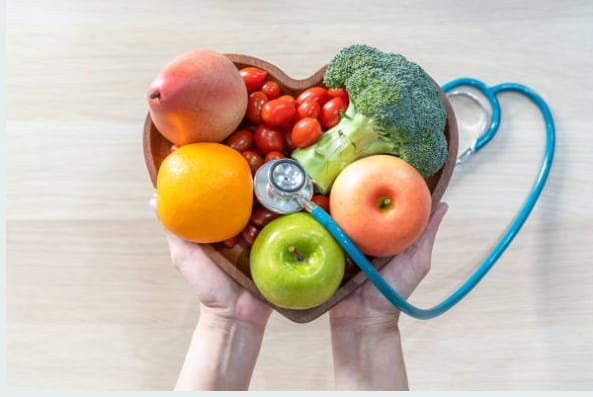
When thinking about a ‘healthy nutrition plan,’ it is important to give some context in the first place. Think of your nutrition plan/habits as the thing that gives your body everything needed to sustain its weight and healthy functioning.
Healthy nutrition is supposed to help you:
- Feel good
- Perform well (physically/mentally)
- Be in a good shape
- Stay healthy!
From that perspective, we can say that ultimately, a good nutrition plan is like quality fuel for a car – It helps you keep performing at your best. Certainly, the human body is much more complex than a car, but there is one basic fact we can all follow. That is the fact that every human body requires a certain daily amount of energy to maintain its body weight and sustain the healthy functioning of internal processes!
This daily amount of energy comes from food sources (duh) and is measured in calories. It is commonly known as the “Total daily energy expenditure (TDEE)” and depends on various individual factors.
Those factors are mainly:
- Gender
- Age
- Height
- Weight
- Non-training activity
- Training activity
- Food consumption
This brings us to the first conclusion on the topic – One of the main components of a healthy diet is the AMOUNT of food it consists of! Oh, and we have to mention that each of the factors above has a complicated formula you can use to calculate your TDEE, but luckily, all those formulas are now packed into easy-to-use calculators that can give a highly accurate number.
Our favorite calculator can be found by clicking HERE.
The Macronutrients

Alright, so you just learned that the amount of food you consume is detrimental to how well your body functions and recovers. However, contrary to popular belief, healthy nutrition isn’t all about the number of calories, but also the CONTENT of those calories. The caloric content of our ‘diets’ is built-up of what we refer to as “macronutrients”. There are three main macronutrients that contribute to caloric content, and those are:
- Protein (4 calories per gram)
- Fats (9 calories per gram)
- Carbohydrates (4 calories per gram)
Each of the macronutrients has a different function in the body, but a rule of thumb is to remember that the essential macronutrients are the first two – Protein and fats. Think of the word ‘essential’ as “the body needs it for optimal functioning, but can’t produce it on its own.” Protein and fats are essential for a variety of processes, including, but not limited to:
- Recovery
- Maintenance of lean body mass
- Body temperature regulation
- Hormonal regulation
- Growth and maintenance
This is why it is of prime importance to focus on deriving these 2 in sufficient amounts daily.
Generally speaking, your daily protein should range from 0.8 to 1g per lb. of body weight, while fats should be set at about 0.35-0.45g per lb.
What About Carbs?
Okay, so if protein and fats are essential and carbs are not… Does that mean you should avoid them? Well, totally not, actually!
Though non-essential, carbohydrates are the preferred energy source for the brain AND on top of that, are the best source of energy for high-intensity training activities.
This means that if you are an active trainee, you can feel free to fuel your workouts with quality carbohydrates after securing your protein and fat intake!
The Micronutrients
The human body is a complex machine that requires not only sufficient calories but also an array of vitamins and minerals to function properly. A deficiency in any one of these essential nutrients can lead to a host of health problems. That’s why it’s important for everyone to make sure they are getting enough vitamins and minerals in their diet.
You can do this by eating a variety of healthy foods, including fruits and vegetables. However, if you are not a fan of plant products, you should consider multivitamin supplements to fill in any gaps!
Food Quality

Checkpoint #2 – Cha-ching!
So far, we’ve learned that the amount of food & the macronutrient content are the two primary components of a healthy eating plan. However, that’s not all there is to it. The third most important factor is the quality of the food that shapes up that caloric intake!
When choosing your food products, you should consider the fact that the mass-production of certain foods leads to significantly worse quality. For instance, the animals grown during the mass-production of animal products are fed unnaturally. By unnaturally, we mean foods like corn and soy, which generally have a poor nutrient profile, which impacts the quality and nutrient profile of the meat and organs, as an end result.
That being said, when building up your nutrition plan and choosing the products, focus on purchasing products from local farmers and small businesses rather than grocery stores!
Final Thoughts
With so many different definitions of “healthy eating,” it’s easy to see how the confusion arises. However, the basic principles of a healthy diet remain the same, regardless of who you are and what goals you have with your nutrition.
Those are:
- The total amount of food
- Total macronutrient & micronutrient content
- Quality of food products
Focus on those, remain active, and your body will be thankful!
Comment below and tell us your definition of a healthy diet!

by admin | Jun 10, 2022 | General
What does your wardrobe say about you?
Have you ever wondered whether the way you dress and the colors you choose define you as a person? It is pretty common for us to not pay attention to the clothes or colors we choose for the day, but there actually is a pattern that shows we don’t pick out just anything randomly.
The specific color of clothing can tell us more about us than we suspect. It is thought that color patterns are engraved in our brain at an early childhood stage. It depends on the exposure and gut feeling towards a particular color, as well as specific experiences.
Emotions are like colors, and subconsciously we tend to like or dislike some of them.
Bright colors

If a person dresses in bright colors, such as yellow, orange, and red, he is most commonly going to be perceived as a trendsetter and change-maker. This means that the person is friendly, and people can approach them, without feeling any pressure or fear. The only contradictory color of these is the color yellow because it could cause slight frustration in some people.
Black, grey and blue
These classic colors show a person who is well-groomed and can take care of themselves.
Sometimes he, or she, may be a bit too serious and demanding, but this only shows the well-organized and sophisticated side of that person.
Let’s talk about style.
Not only the colors but the specific style that one has can tell us more about the person and their personality. Let’s take, for example, men who wear V-necks and crewnecks. V-necks are worn by people who are laid back, chilled and easy going. Crewnecks, on the other hand, are the clothing that more uptight and balanced people choose for the day. These kinds of people tend to take more time making decisions and have an intelligent approach to everything.
Sports clothing can give away something about you, too. For men, It usually says that the guy is easygoing, doesn’t care too much about how he looks and doesn’t mind making quick decisions.
For women, the sporty look tells us that the gal is confident and always ready for action – whether it’s to the supermarket, or for an errand. It’s the opposite of the vibes that men give away in a tracksuit.
The clean and simple look is reserved for people who don’t want to be judged by their covers. The casual white T-shirt and jeans look are reserved for people that have nothing to prove to others.

These types of dressers don’t like being recognized or standing out in a crowd and are keener on the intellectual side of things. The “I want to make a statement” look speaks for Itself. You know that a person wants to be spotted when he is in a classic, clean-cut suit with an outstanding tie. For women, it’s the elegant dress, high heels, and bright colors that bring out that extra confidence that gets everyone’s heads turning around.
The trendsetter look is the most interesting of all. It not only combines all the other looks and personality traits but also sets the rules for the new ones. This type of person is not only ready to experiment but has the boldness to be a leader and great decision-maker. Typical clothing for the trendsetter is weird looks that have not yet been approved by social standards, like colorful socks and hats and strange combinations with them.
For both sexes, this type of dresser says only one thing – I am here and ready to show you the way.
Final Thoughts
If you’re looking for a way to shake up your wardrobe, consider what it says about you. For example, if your closet is full of earthy tones like browns and greens then people may perceive you as more grounded or stable than someone who has mostly bright colors like pinks or yellows.
You should also know that red can be perceived as rude or angry depending on the shade (a deep crimson will come off differently than a light pink) – so keep this in mind when choosing accessories and color schemes for your next best look!






















